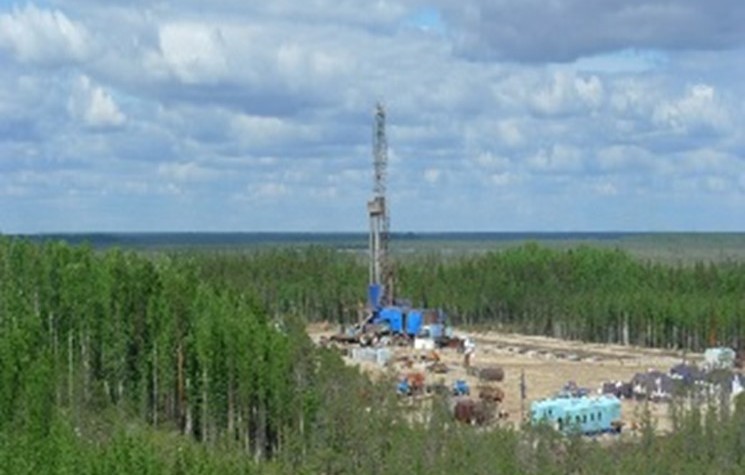PetroNeft Resources announces production guidance of 4000 bopd for year- end 2015 from Russian acreage — double current output

By Stewart Dalby
Time was, back in 2013, PetroNeft Resources, which is a Russia focused E & P, gave up making production forecasts. It only seemed to get them into trouble. Output from its Lineynoye and Abuzovskoye fields on its flagship Licence 61 in the Tomsk Oblast in Siberia stalled at less than 2000 bopd, when once 4,000 boepd or even 8000 boep was portended.
That there was trouble in moving up production was, in part, due to technical problems in the Lineynoye field. But the bigger problem was that, labouring under a suffocating load of debt, the company did not have the cash to drill new wells.
This in turn led to some Russian minority shareholders attempting to gain control of the company without making a full bid for it. With all this going on the shares nose-dived. The management led by CEO Dennis Francis and CFO Paul Dowling, kept its nerve, firming believing that with the right co-venturer the assets had great potential to be further developed. They cast around for a farm-in partner.
The second half of two thousand and fourteen marked the beginning of a turnaround, with PetroNeft signing up Oil India as a 50 per cent farm-in partner for Licence 61 in the Tomsk Oblast.
This, of course, was a breakthrough transaction for AIM-quoted PetroNeft, as it delivered a US$35 million upfront cash sum that has allowed it to clear the debt pile and, importantly, unlock a US$45 million spend on exploration and development across the key 4,991 sq km block 61 which hosts audited reserves of 117 million barrels of oil.
After drilling some new wells the company was able to announce, in its most recent output update that production was running at 2000 bopd and year-end production from Licence 61 is estimated to be between 3,500 and 4000 bopd based on current drilling results and the planned 2015 drilling programme.
The block has a number of fields and instead of going immediately back to one of two existing two producing fields, Arbuzovskoye which was producing 800 bopd out of a total of under 2,000 bopd decided to start a new operation on the yet- to- be developed Tungolskoye field.
Two wells have been drilled here, one in the Soviet era and the other five years ago by PetroNeft. As a result of these wells the field is thought to host 20 million barrels in 2P reserves.
The Tungolskoye No 5 well, which is costing US$3.5 million to drill, is PetroNeft’s first horizontal well with a pilot vertical hole followed by a short horizontal drill. The previous wells were vertical wells. Tungolskoye No 5 has been drilled higher up then field than the two previous wells, thus avoiding any danger of running into water cuts which so bedeviled output at the two existing producers Arbuzovskoye and Lineynoye.
The idea of a horizontal well was that it could yield flow a rate of 500 bopd instead of the 120 bopd or so that vertical wells habitually produce in this part of the world.
As it happens, this figure turned out to be an under-estimate. The company has announced that the Tungolskoye No5 well tested at over 600 bopd and is now in production. The horizontal segment of T-5 well was just over 350 metres of which over 80 per cent was located in the J1-1 and J1-2 Upper Jurassic intervals. Production reached 604 bopd.
Having started off with Tungolskoye, PetroNeft has also quickly picked up the reins at Arbuzovskoye. On Arbuzovskoye four vertical wells have been drilled and three of them are producing. Current plans are to develop the southern portion of Arbuzoskoye with a combination of horizontal and vertical wells starting in 2016. In all, total production from licence 61 has been running at about 2,450 bopd.
The latest update, again published before Easter, says at Tungolskoye a contract for the drilling for up to 11 wells, up to five of which will be horizontal has been awarded to SGK Drilling, a subsidiary of Russia’s drilling contractor. The construction of a 25 km pipeline and utility line from Tungolskoye to Lineyskoye Central Processing Facilities is now underway.
The T-5 well is temporarily shut-in for pump remedial work to be completed. However, there is output from Wells 103, 104 and 107 on Arbuzovskoye, which has kept overall production steady at 2000 bopd. With addition seismic to be acquired there are plans to develop the southern lobe of Arbuzovskoye in 2016 with a combination of vertical and horizontal wells.
On the large Sibrayevskoye field where there could be more than 50 million barrels of oil, appraisal well No 373 has spudded with the result expected this month. The company is highly incentivised to bring this field online: the Oil India farm-in terms include an additional U$5 million performance bonus if production from the field hits 7,500 bpd within the next five years.
So there is a lot going on. The company looks to be in a recovery mode and missed targets appear to be a thing of the past. But the activity has clearly yet to excite investors in the poor trading climate. The shares are currently trading at Euros 0.06 against a 52 week high of Euros 0.09.
Comments (0)